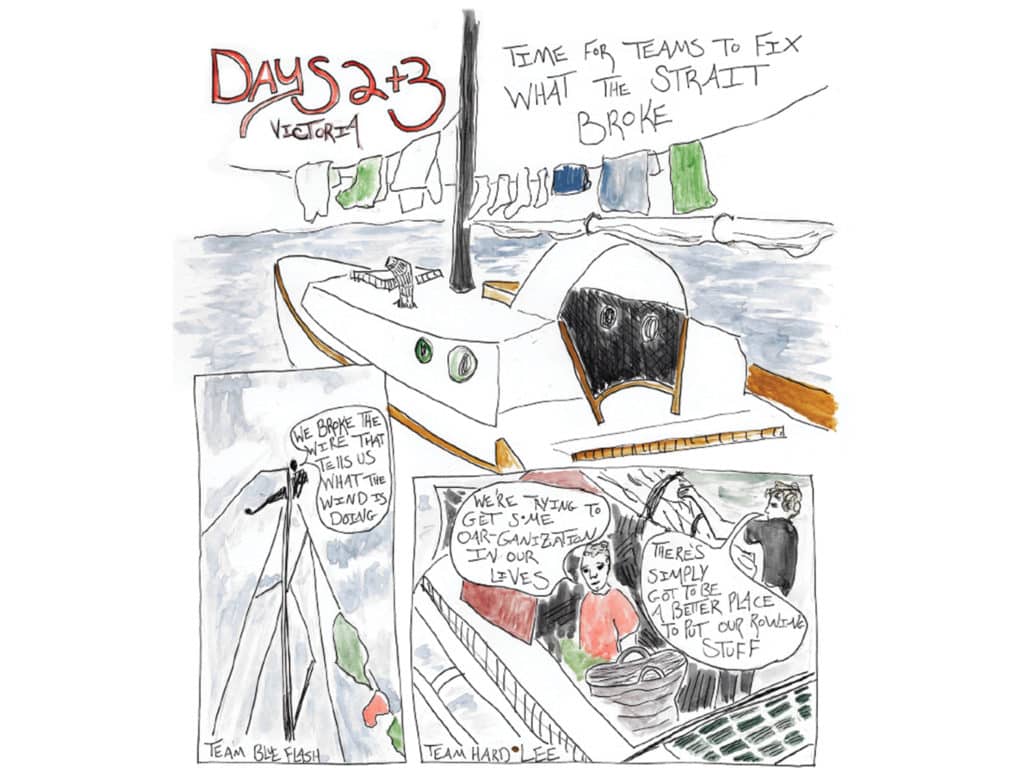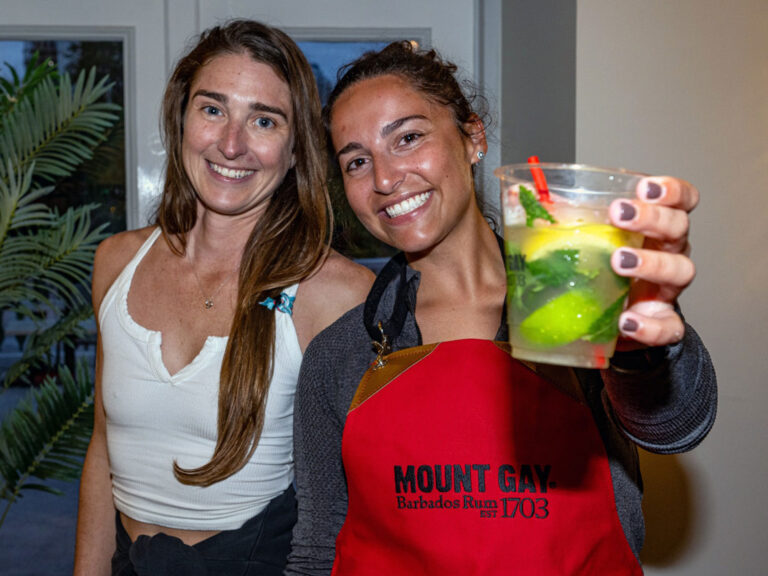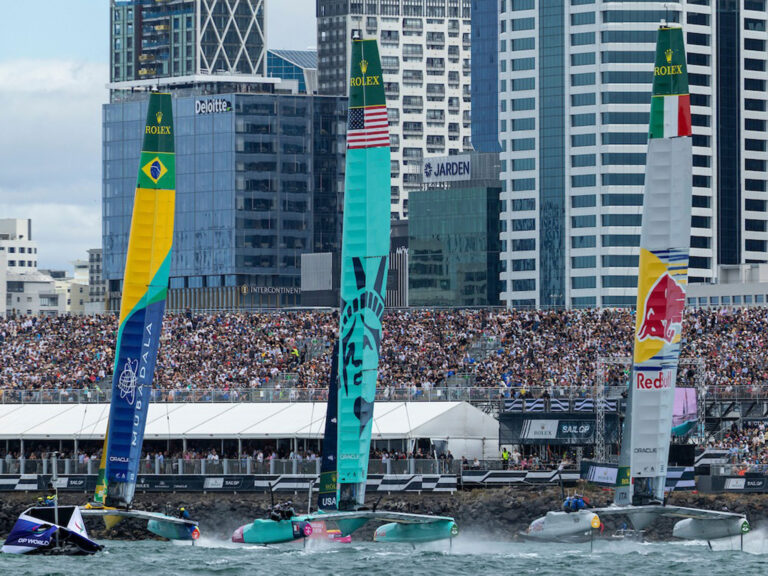
When it comes to distance races, the annual Race to Alaska is as unique as they come. The grueling miles from Port Townsend, Washington, to Ketchikan, Alaska, sends competitors through the remote waterways of the Pacific Northwest. For race organizers, it’s equally challenging to share the unique stories of its competitors, so this year they enlisted Port Townsend artist Nhattaleah Nichols to help document the unsung heroics—not in press releases or photographs, but rather with a daily comic.
“I’d kept hearing stories about parts of the race that would’ve been difficult to cover with a tracker or a video,” says Nichols, 37, editorial cartoonist for the Port Townsend Leader. “Bar stories about how one guy got stuck upside down underwater and had to saw his way out of a wetsuit. As a documentary comic-maker, I just kept thinking that turning them into a comic would be the only way to really show people some of these crazy moments.”
Nichols approached the event’s organizer with a few of her drawings, and they worked out the concept. She had lots of ideas about how it was going to work, but Nichols says she didn’t realize how limited cell service would be in British Columbia. “Putting them out daily and live wasn’t as possible as I thought,” she says, “but I did create a daily comic how I’d intended, by interviewing [a competitor] in the morning about the previous day, drawing all day, and then uploading the following morning.

It wasn’t difficult for Nichols to find her daily comic angles. While the event’s media team was focused on the front-runners, she says she was drawn to the weird and wonderful stories from the middle and back of the fleet. “My skill is that I like to listen, and boat people like to tell stories,” she says. “I’d ask a question, do a little sketching while they talked, and at some point during the interview, I would have an ‘ah!’ moment where the story would become clear.” Nichols has combined the works in a self-published book entitled Boats, Bears and Bad Life Choices (available at nhattnichols.com). “It was a learning curve, for sure, putting the book out, but it’s been pretty amazing to get to hold a physical object in my hand at the end of it. It’s a lot more rewarding than hanging work in a gallery.”









